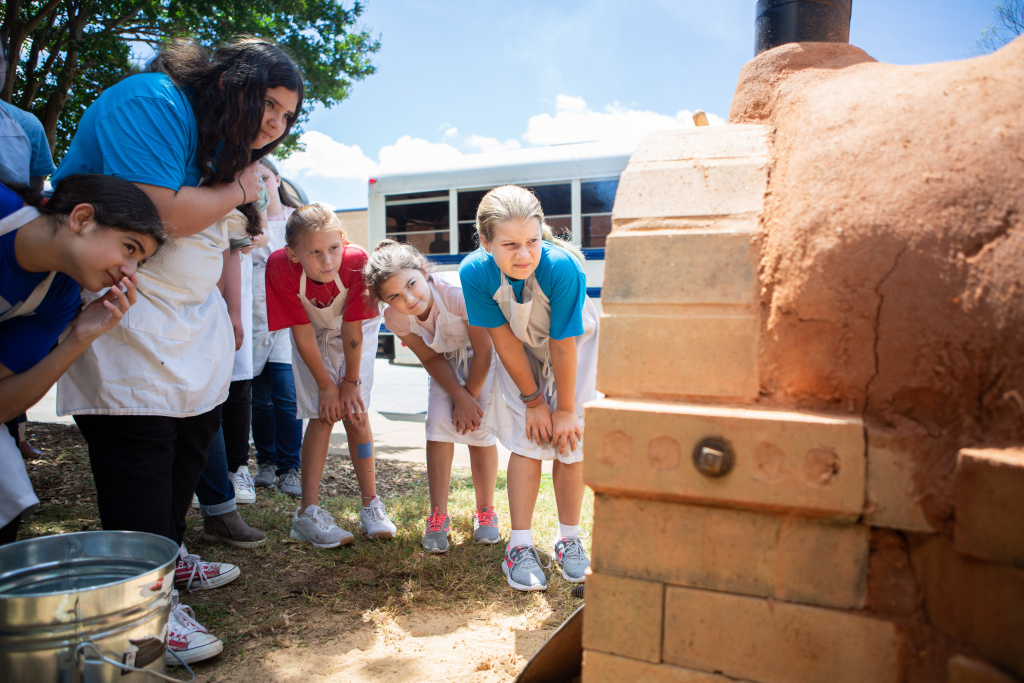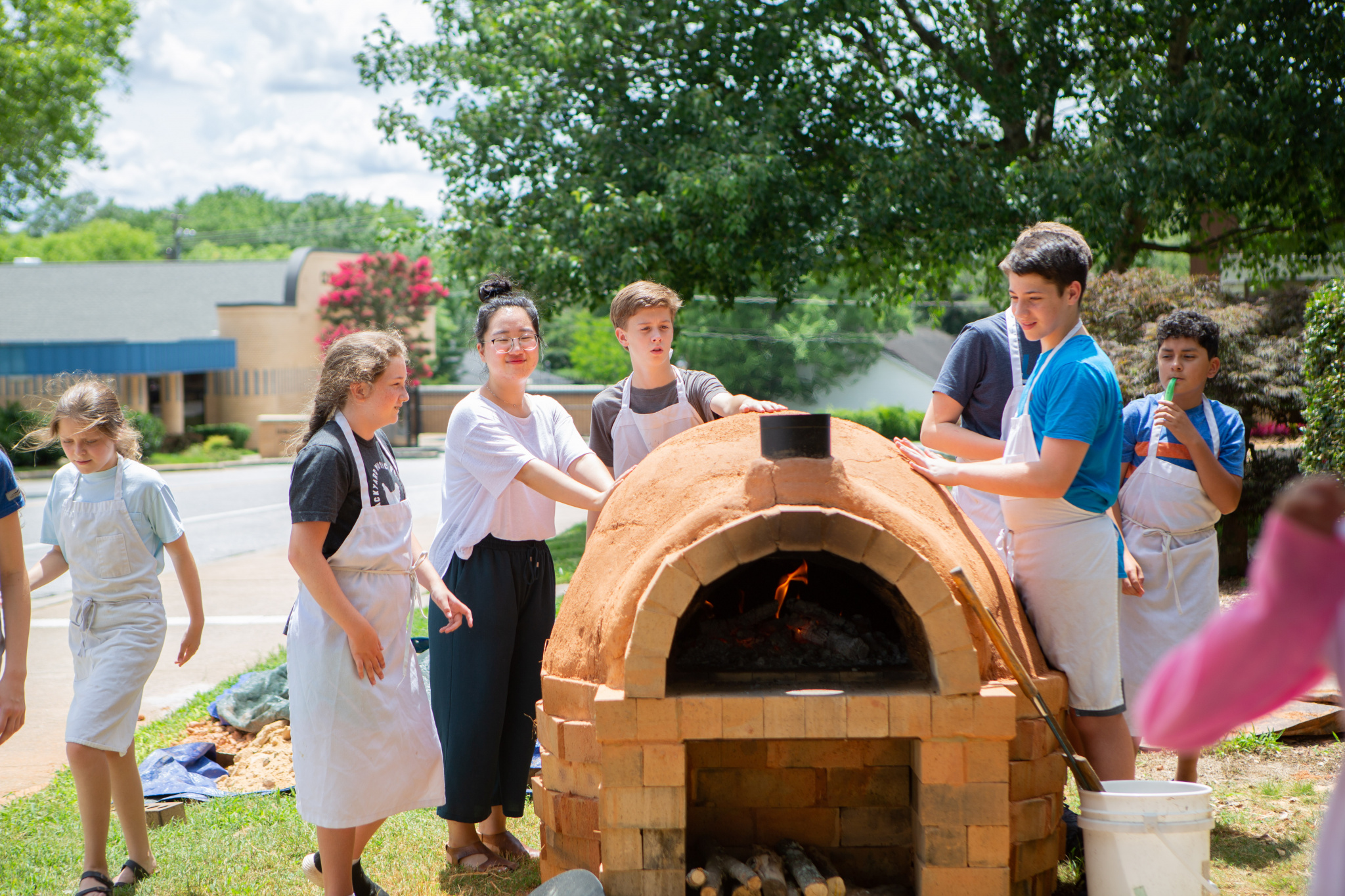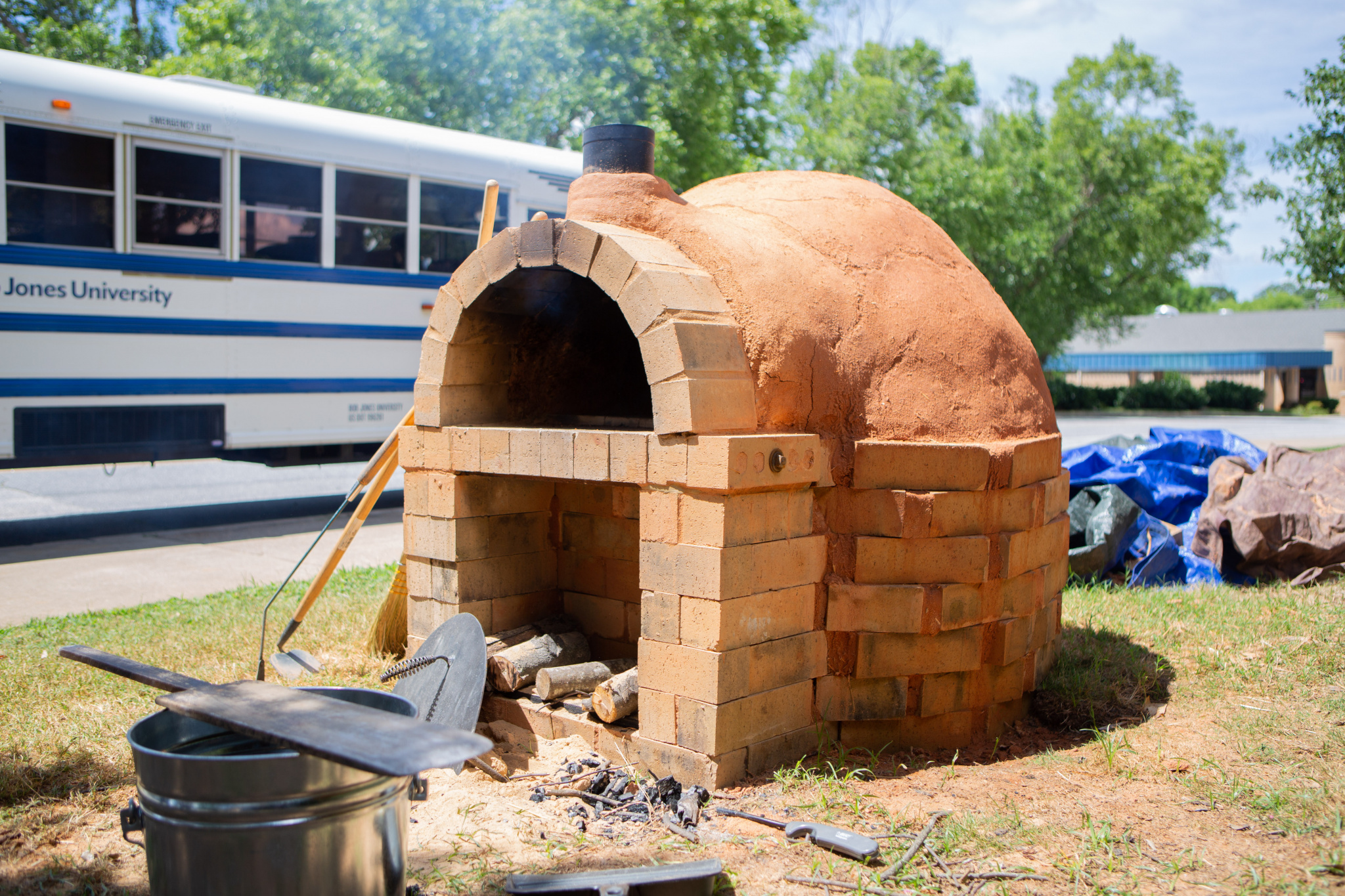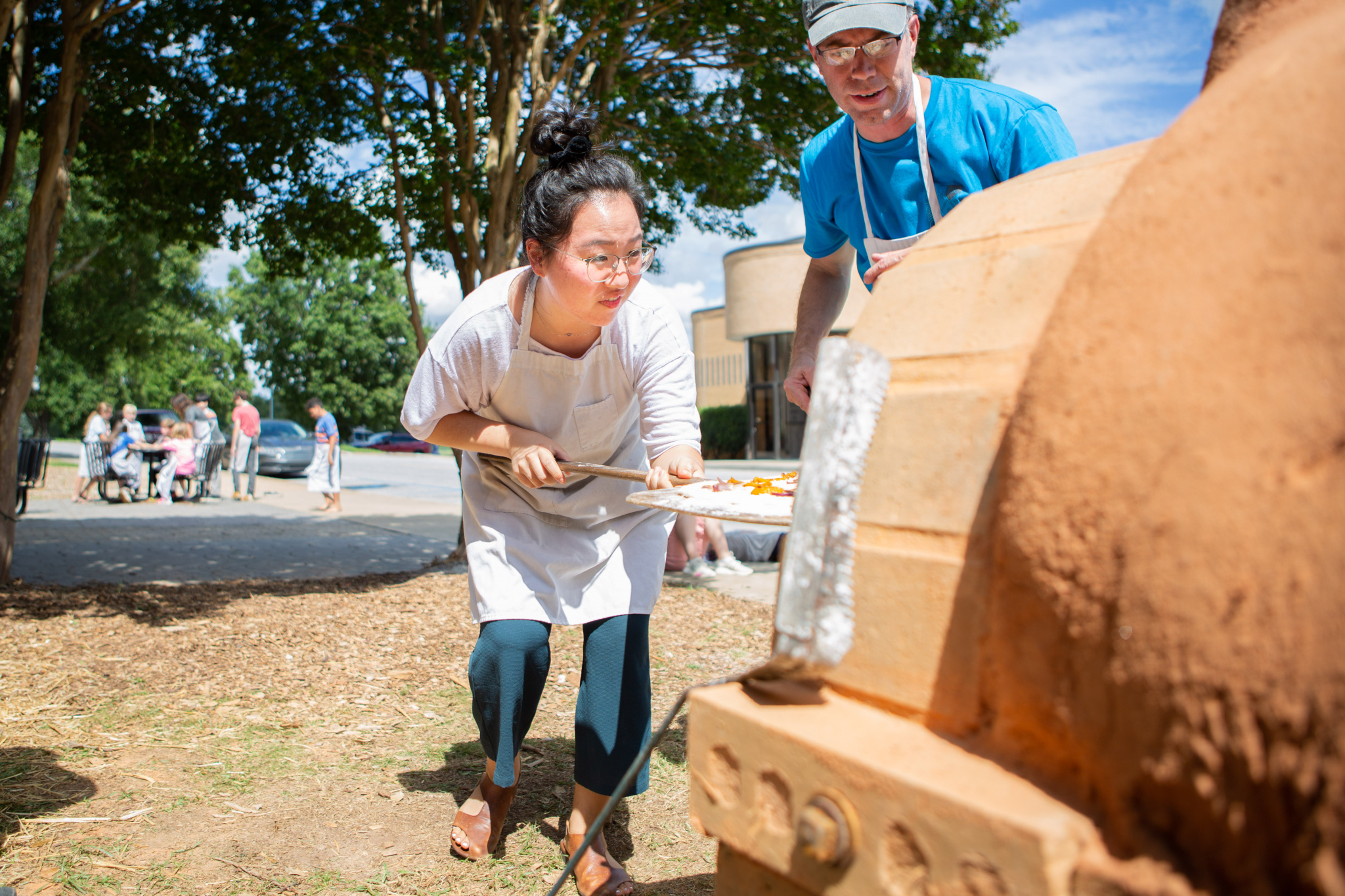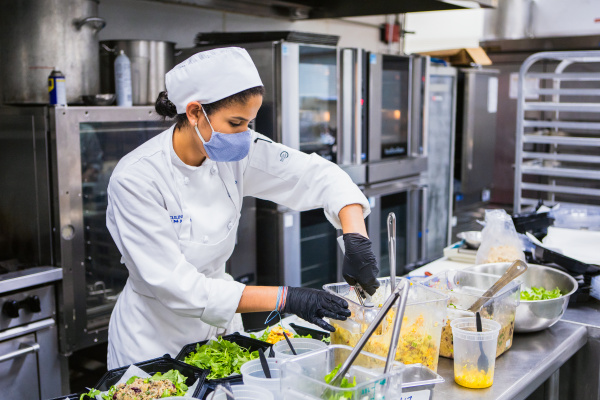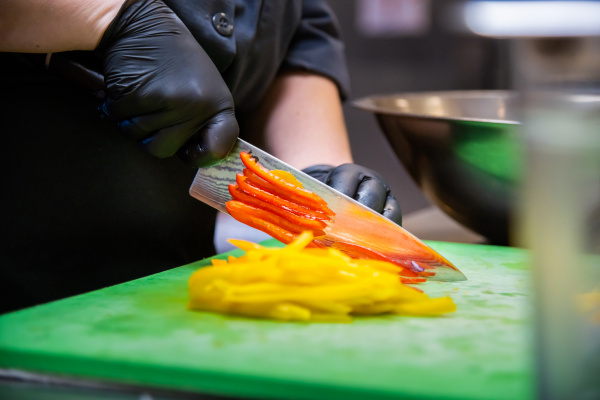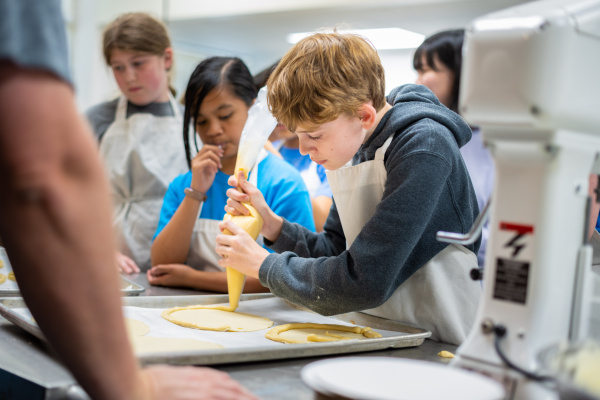It’s a scene straight out of Tolkien’s The Hobbit. Puffs of white smoke pass through the mouth of a domed earth oven. Sand covers the feet of the base and green grass below. You’d almost expect a hobbit to come along, asking for second breakfast. This Middle Earth-esque cob oven sits on the culinary arts front lawn and comprises the program’s newest adventure.
The Brains
The unlikely pairing of a chef and a communication studies faculty member (plus extra helpers) brought this outdoor oven to life. Chef David Miller collaborated with his friend Dr. Paul Radford when the project first started. Then, Andrew Alger, a local culinary arts graduate, and about 30 middle school culinary arts EDUcampers joined the fun. Together this team designed, constructed and completed the oven.
Although Radford had never built a cob oven before, he researched extensively and drew the designs. He said, “I just watched a couple of YouTube videos, read some blogs about how you build them.” Next, it was time to gather materials.
“We used some old brick that the school had lying around. We used red clay from back campus. … (Grounds crew) had some sand left over from a project that they had brought over,” Radford said. “Really, the people on campus were very helpful with the materials.”
Additionally, EDUcampers helped in three groups of 10. Said Radford: “It was pretty important for me to have the campers very involved in the process. This wasn’t just something I built and they watched.”
The Brawn
According to Alger, the dome is a homemade mixture of water, sand and red clay. The base consists of bricks. “The only thing that we bought was the firebrick and that was $85. Everything else is from campus,” he said.
After the ground was leveled, the campers helped. They tested different sand and clay mixtures by baking small batches in the culinary arts kitchen ovens. Then, they stacked bricks on the mixtures to measure strength. Radford described this process as a “very hands-on experience, literally squeezing clay through hands.” He said: “Frankly I don’t know if kids that age these days get any experience doing (this), because so much is virtual. So much of baking is (turning) on the oven to 375°.” After the messy discovery of the right mixture, they created the final batch for the oven.
“We laid out a tarp and we put the materials down, and the kids stomped on it until it spread out over the tarp,” Radford explained. This unconventional method of mixing engaged campers in an exciting way. Whether doughs or dome mixtures, they made things from scratch during camp.
Said Radford: “We kind of created a bucket brigade . . . where we passed softball chunks of clay down.” Radford formed an earthen dome around the existing sand dome. Then the campers shaped the mixture and added extra mix to the base. After the cob dome dried, Radford and others pulled out the sand and added a front door. Eleven days later, EDUcampers debuted the oven.
Miller will continue using the oven through the remaining EDUcamps this summer. It can cook both pizzas and flatbreads in a fraction of conventional oven times. Other products such as mini apple pies might appear soon. Additionally, Radford hopes that the campers who helped build the earth oven will find a sense of pride in their work and may be inspired to create something similar at home, too.
Said Radford: “You can do some things in that oven that you can’t do in the expensive ones inside culinary. It’s pretty neat to have one of those. . . . It creates a really interesting space for culinary types of experiences.”


